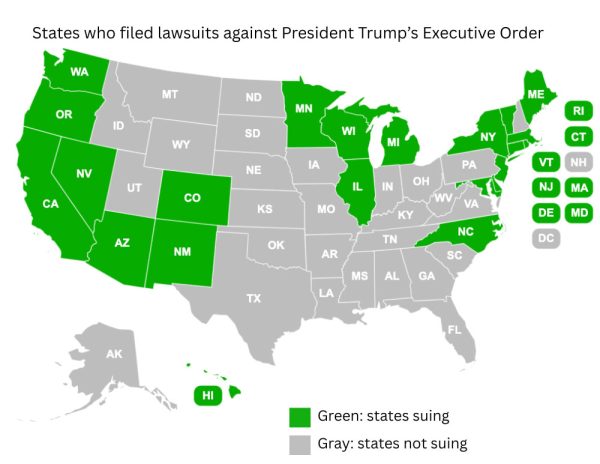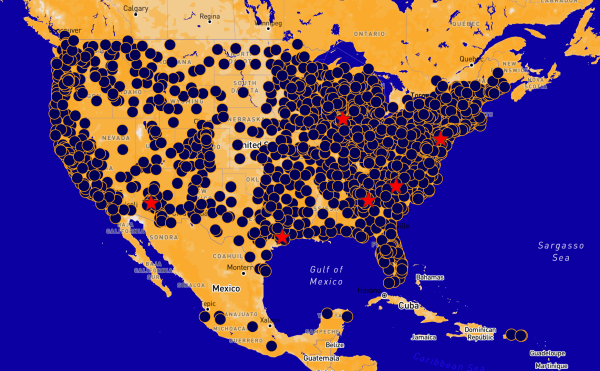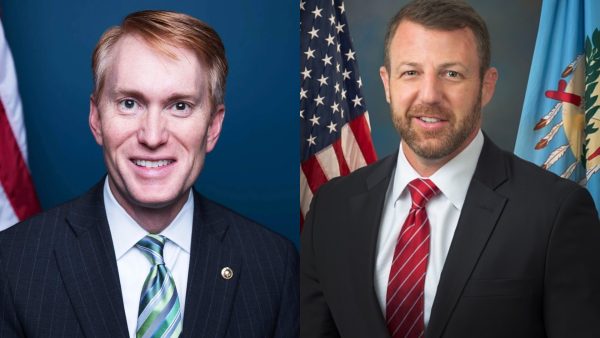Gen Z impact and female registration surge unsettling Tuesday’s outcome
A child holds a pro-life sign during a March for Life Demonstration this year in Washington, D.C. (Mikaela DeLeon/Gaylord News)
An uptick in registered female voters and an energized Generation Z following the overturning of Roe v. Wade could lead to an upset in the gubernatorial race on Election Day.
The 3% increase in female voter registration in Oklahoma came after the U.S. Supreme Court ruled in July on the Dobbs v. Jackson Women’s Health Organization case. In a 6-3 decision, the court found that abortion is not a constitutional right.
After the ruling, the percentage of registered women voters in Oklahoma bumped up from 48 to 51%. At least 10 other states had similar boosts and an additional rise in Democratic voter registration. More than 55% of the newly registered female voters identified as Democrats, marking an 11% increase from the previous 44% before Dobbs.
Kansas experienced the largest surge in female voter registration, with a 15% increase from 49% to 65% of total registered voters. The increase is credited with the blocking of a total abortion ban in the state in August.
A recent poll from Amber Integrated indicated that 51% of Oklahoma women support Democratic nominee Joy Hofmeister for governor, while 34% support incumbent Republican Gov. Kevin Stitt. Hofmeister holds a lead in the ages 18-29 demographic, favored by 41% of the voters, compared to Stitt’s support of 37%.
Charles Finocchiaro, associate director of the Carl Albert Congressional Research & Studies Center, believes recent abortion legislation contributed to energizing Democrats and Republicans in the state, but said Hofmeister’s messaging is more relatable than that of Stitt.
“The American public as a whole is relatively moderate on a lot of things, and one of those is abortion. So the majority of the American public, and this is true in Oklahoma, doesn’t want either an outright ban on abortion in all circumstances or for abortion to be legal in all circumstances,” Finocchiaro said.
A 2020 Pew Research study found that women are more likely to vote than men and are more likely to lean Democrat regardless of age. Other studies have found that despite Generation Z and Millenials being less likely to identify with a party, a majority of party-affiliated voters fall into the Democrats’ camp.
With an increasingly close gubernatorial race, political leaders are asking themselves if the new female voters and energized Generation Z can impact the upcoming election, especially since women have outvoted men in Oklahoma the past two midterms.
Pew Research found that 51% of adult Oklahomans support legal abortion in all cases, while 61% of adult Americans believe abortion should be legal in all cases.
Hofmeister’s website states that Oklahoma’s abortion ban “lacks compassion” and that Hofmeister does not believe in “extremes on either side of abortion access.”
Finocchiaro said Hofmeister’s campaign of moderacy on such a salient issue has benefits and could help her in cinching the votes of the undecided.
Stitt is sticking to his anti-abortion stance and his promise to “sign every piece of pro-life legislation.” In May, prior to the Dobbs v. Jackson decision, Stitt signed HB4327 into law. The bill banned abortion from the moment of conception and allowed for no exceptions including rape or incest.
“Hofmeister has a unique opportunity for a lot of different reasons. It is remarkable that this is a race that people are watching nationally because Oklahoma is always one of the top five reddest states,” said Finocchiaro. “There hasn’t been a Democrat that has won statewide here in many, many years, so the fact that we’re even talking about it is in itself notable.”
Stephanie Henson, a longtime member of the League of Women Voters, considers the growth of voters to be promising.
“For whatever reason, Oklahoma voters are just not as mobilized or motivated. Or, at least historically, have not been. It is encouraging, every little bit,” Henson said.
The League of Women Voters is a nonpartisan group dedicated to encouraging informed and active participation in government through education and advocacy. The LWV produces voting guides that can be found in public libraries and online in order to encourage voter education.
Oklahoma was ranked 50th in voter participation in the 2020 presidential election, and the trend continued during the August runoffs.
“You do talk to a lot of people who have just never voted. They just don’t believe it does any good to go and vote,” Henson said.
Despite the difference between the 15% increase in Kansas and the 3% growth in Oklahoma, the increase in voter registration could point toward a sizeable boost in voter turnout, given the state’s inactive voter history.
Rebecca Greenhaw, former president of the Oklahoma County women’s voters group, thinks the increase results from young women paying attention to their rights.
“I was encouraged this year because a lot of the younger women seem to be more engaged this time. The overturning of Roe v. Wade, I think, it was kind of a wakeup call. I think a lot of people really didn’t think that would ever happen,” Greenhaw said.
Greenhaw said younger women have been the focus of Oklahoma County’s LWV, contrary to the focus on suburban women that dominated the lead-up to the 2020 election.
“That’s our future,” Greenhaw said. “There are a lot of young women who believed, mistakenly, that our rights were protected constitutionally. And now that they understand that’s not the case, we’re hoping that we can engage them and provide some accurate information for them to understand what has to be done for that to occur.”
Despite a national 11-point increase in youth voter turnout in 2020, Oklahoma youth voter participation continues to be among the lowest in the nation. The Oklahoma LWV campaign, “Grab Your Future by the Ballot,” was meant to encourage young voters to understand the value of civic engagement.
Henson said she thinks the social media push, along with the timing of the Dobbs decision, has resulted in younger voters becoming more aware of the fall election and interested in its outcome.
Oklahoma’s age 18-34 demographic makes up 21.8% of eligible voters, a percentage equal to the number of eligible voters in the 65-and-older age group. In the 2020 presidential election, only 34% of younger voters went to the polls, compared to 70% of the older group.
Angelora Castellano, a Student Campaign Fellow for Kendra Horn’s 2020 campaign and a senior at the University of Oklahoma, thinks many students are passionate about voting but are held back at the polls.
“There are a ton of people in my age group who don’t know how to vote, don’t know who to vote for and are actively impacted by the multitude of voter suppression tactics still in use by many states,” Castellano said.
Castellano said significant issues motivating Generation Z voters are climate change, religious involvement in government and the right to make medical decisions without government interference.
“I think that a level of motivation is required to participate, but overall I think there are ample opportunities for young people to get experience and learn,” Castellano said.
Gaylord News is a reporting project of the University of Oklahoma Gaylord College of Journalism and Mass Communication. For more stories by Gaylord News go to GaylordNews.net.






